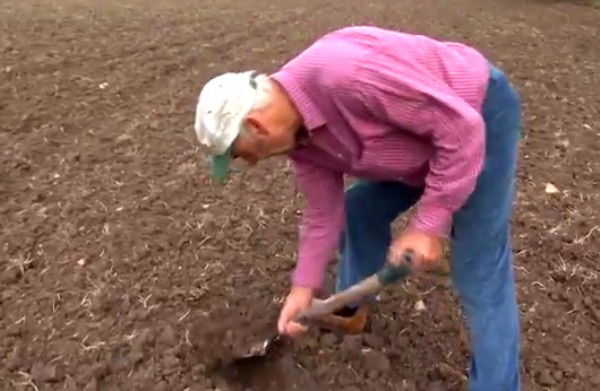

Jonathan Boaz started experimenting with green manures as a way to ‘to get something very beneficial out of a disaster,’ as he phrases, it. The disaster he refers to was the ‘terrible climactic conditions’ of the past few years, which caused serious issues with establishing his arable/grass crop rotation.
Jonathan’s father began farming the 400 acres at Droitwich in 1968 and in 1992 Jonathan took over the management of the farm which has since expanded to 600 acres, including 150 acres of permanent pasture, much of which is on difficult lias clay, plus 130 acres of cereals, which are generally feed wheats or barley. The remaining acreage is made up of 3-4 year grass leys, which are grazed early in the season with the regrowth made into 400 acres of hay each year.
In an ideal world the arable/ grass rotation would have been done on a four year basis, but the recent wet weather caused serious damage to the soil, especially on the heavier ground, with compacted layers of blocky soil and poor surface drainage through the soil profile, meaning it wasn’t possible to create a viable seed bed.
Jonathan turned to green manures as a solution and has found them to be very beneficial. Though relatively expensive to put in, the method pays dividends for the subsequent crops.
Jonathan has been endeavouring to maintain and improve organic levels in the soil for many years, having learned the lesson thirty years ago that, ‘you can’t take soil organic matter for granted’.
‘If you keep on with cereal production and don’t introduce any farmyard manure or grass leys the soil will basically die on you,’ he says.
His experience is that grass leys and green manure brings it to life again.
Through experimentation he has learned that a mustard crop needs mulching finely to stop incorporation issues when its ploughed in and should be topped before setting seed to reduce volunteers in subsequent crops. Jonathan has also sown a bespoke mixture based on the Summer Quick Fix, which includes crimson, red and persian clover with Italian ryegrass added to the mix, which adds grazing and a hay cut to the range of soil benefits.
His preferred method is to establish the red clover and rye grass mix after winter barley, tilling the surface shallowly then drilling with a 6m drill both ways, but he says that he never stops experimenting and learning.
Jonathan stresses that although he has a strong concern for wildlife and soil health, his decisions concerning the business are always ‘profit led and must be commercially viable’. And so it has proved. Wheat crops with a yield of 10 tonne a hectare are not uncommon on the Boaz farm, even in difficult conditions.
Date Posted: 29th March 2017



